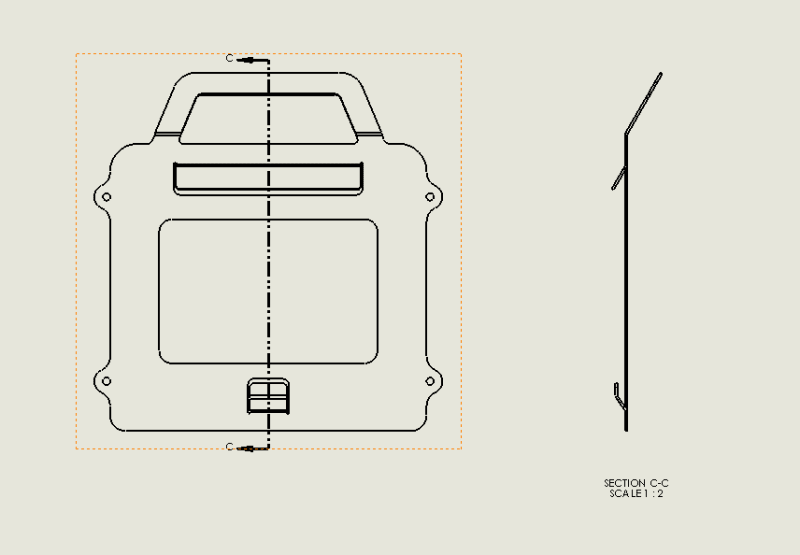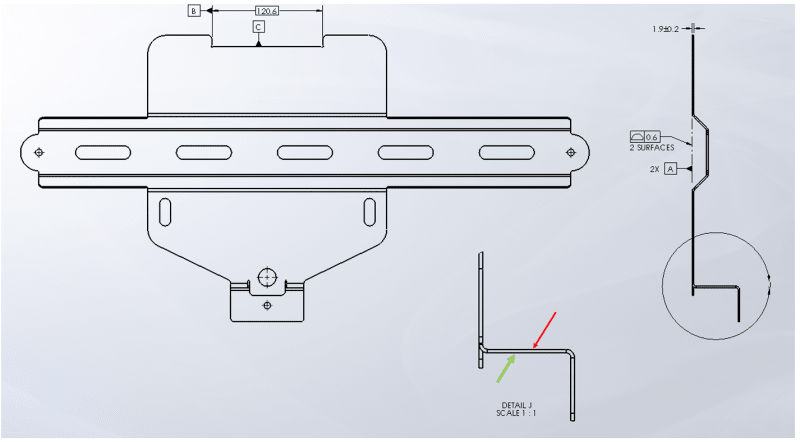Hi,
Was wondering how people would usually dimension/tolerance the outer perimeter of a part like this. If the part was not bent, a profile tolerance around the outside perimeter would be nice and easy. Since the part is bent, it makes it a little less intuitive to use a profile tolerance...

Was wondering how people would usually dimension/tolerance the outer perimeter of a part like this. If the part was not bent, a profile tolerance around the outside perimeter would be nice and easy. Since the part is bent, it makes it a little less intuitive to use a profile tolerance...


